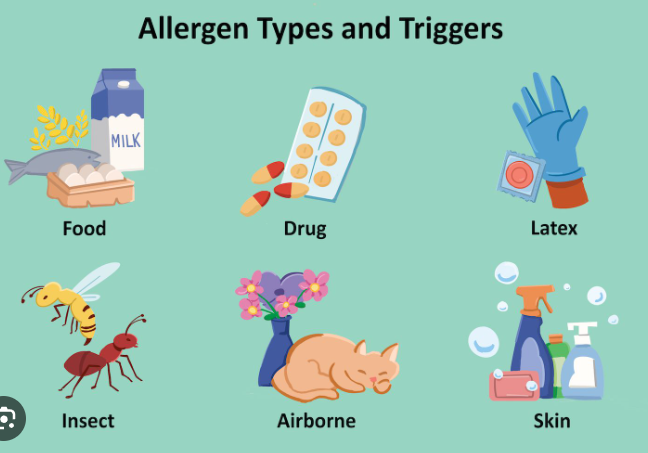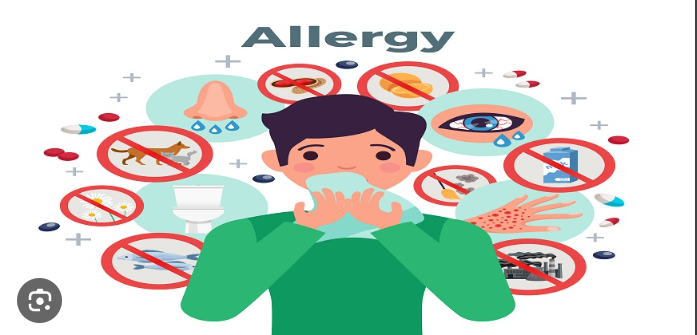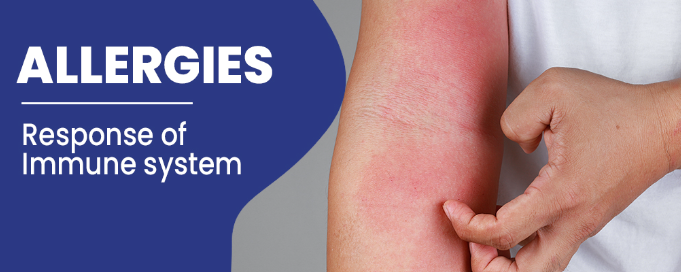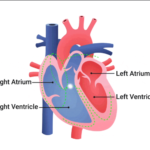Tens of millions of Americans suffer from allergies, whether the problem is pollen or peanuts.
According to the Centers for Disease Control and Prevention, over 50 million Americans have some form of allergy, making it the sixth most common cause of chronic illness in the country.
These include seasonal allergies like pollen, as well as year-round pet allergies or environmental allergies like dust mites indoors. Hay fever, also known as allergic rhinitis, is a common condition that is triggered by a variety of indoor and outdoor allergens, including pet dander, pollen from grass, weeds, and trees, and other irritants like perfume. Furthermore, studies published in Pediatrics and JAMA Open Network indicate that 8% of children, or 5.6 million, and over 10% of adults, or over 26 million, suffer from food allergies.

Causes and prevention of allergies
Antibodies, or blood proteins, are produced to counteract antigens—diseases and other foreign substances that induce an immune response. And the antibody immunoglobulin, or IgE, causes allergic reactions. Along those lines, certain people are more likely than others to have this so-called IgE-mediated reaction to one or more allergens, whether that be a mold spore or a medication, pet dander, or pollen. Factors that increase the risk of developing allergies include being a child (although many adults also develop new allergies) and race, where minorities, including African-Americans, Hispanics, and Asians, are at higher risk than whites. Most strongly influencing one’s chances of developing allergies is genetics, or a family history of allergies.

Diagnosis
In addition to everyone who has had an allergy confirmed by a doctor, a large number of people say they believe they have allergies but have never had one verified. For instance, a sizable fraction of people who believe they have a food allergy are actually not, and they may be avoiding it needlessly, according to research. Furthermore, rather than having a wheat allergy, some people may have a food intolerance or a different condition, like celiac disease, in which wheat triggers an immune response. (In that scenario, figuring out the cause of the issue can also be crucial because issues linked to non-celiac gluten sensitivity or celiac disease frequently aren’t.)

Gupta states, “There are a plethora of food-related conditions.” In order to ascertain whether a food allergy is present and to learn how to treat it, it is imperative that you see an allergist and undergo testing.
To pinpoint the exact cause of the allergic reaction, allergy testing is commonly performed in addition to reviewing a patient’s family history and talking about symptoms. According to Dr. Thomas Luft, an internist at UnityPoint Health in Pekin, Illinois, “the most accurate method is skin testing, where we take a little bit of the allergen and we expose the person’s skin to that and see if they develop an allergic reaction on the skin.” “We search for a small area that resembles a mosquito bite—it turns red and kind of itchy—that tells us they’re allergic to that particular or specific thing.”

Management
Some people who have an allergy to a specific food, for example, develop a natural tolerance to that food with age, so that they essentially “grow out” of their allergy. But there’s no cure, per se, for allergies. Even so, there are a number of things that can be done to reduce or even essentially eliminate ongoing symptoms, the most powerful of which is to avoid the allergen. In some of the most dramatic examples, people who move to a different area where certain pollens or grasses that trigger allergic reactions aren’t prevalent report experiencing dramatic improvement. And in a simpler, more confined scenario, a person who is allergic to cat dander and who doesn’t keep a cat in the home and avoids encountering cats elsewhere can also avoid uncomfortable allergic reactions (until, that is, unexpectedly encountering a feline).

Also read-Introduction: Exploring The Health Benefits Of Hibiscus Plants
images source: Google
Disclaimer: The opinions and suggestions expressed in this article are solely those of the individual analysts. These are not the opinions of HNN. For more, please consult with your doctor




































